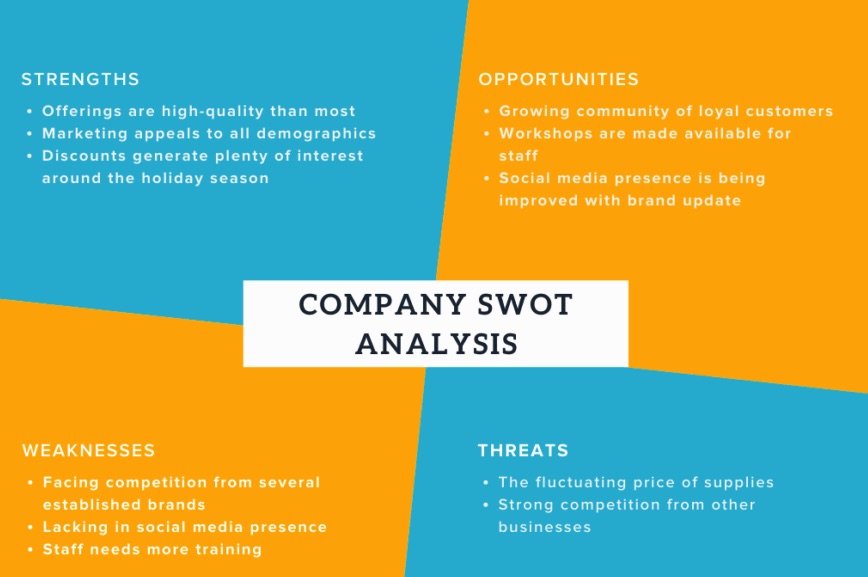7 Ways to Turn Visitors Into Customers
What you’ll learn about conversion rate optimization (CRO):
- There are a number of things you can do to improve conversion rate optimization on your site
- These include:
- Understanding your audience
- Using creative CTAs
- Optimizing pop-ups
- Conducting SWOT analyses
- Creating authority in your content
- Prioritizing email
- Reducing the number of abandoned carts
Here at Umami, we’re constantly digging into what’s happening in the digital marketing world. We cover SEO, content writing, and web presence best practices. Today, we’re looking at conversion rate optimization (CRO), which is the practice of improving your capability to turn site visitors into paying customers.
It’s certainly not the first time we’ve covered the topic, in fact, we recently talked about how to set conversion goals in analytics, but today we’ll be going over some customer-facing tips to make sure your site is conversion-optimized.
7 Tips for Driving Conversion Rate Optimization
Think of your web presence as the front line before your sales team. At every junction, you’re solving your visitors’ pain points and trying to turn them into valued and returning customers. These CRO tips will help you do just that — so let’s dive in!
1. Understand Your Audience
If you want to reach your audience effectively, you need to know what they’re all about. This means having a clear picture of their processes, pain points, demographics, and behavioural traits.
The key to conversions will always be knowing what your audience wants.
When you shift your perspective to that of your audience, you’ll be in a better position to guide them through the path to purchase on your website.
So how to find out what they want? At the early stage, it’s beta testing and A/B testing your content and products with people you can trust and can give you unbiased opinions.
Once your brand is established, you can tap into what your audience wants by reading comments and reviews (which by the way is a big tip we talked about in last month’s “Copywriting Tips To 3x Your Results”), engaging them with surveys, and building 1:1 customer relationships that enable candid feedback. This will help you write your website copy in a tone that they respond to, catch their attention in the places on your website that are most likely convert, and deploy time exclusive offers to complement their buying and consumer behaviour.
Understanding your audience and giving them what they want (and when they want it) is the best No-BS way to start converting more. It’s tried and true, and it predates websites and digital presences.
2. Use Creative, and Brand Centric Anchor Text CTAs
You’ve already seen us use two anchor text CTAs in this post alone. Each one leads you to another piece of useful content, that also includes more links, creating a web of links your audience can follow to find new and relevant information.
Anchor text CTAs convert leads, but if you don’t believe us:
Sign up for a free Inbound Marketing Assessment today to see how we can optimize your site for optimal conversions!
Anchor text CTAs differ from button CTAs in that they can seamlessly be implanted into your copy and content, and the text can reflect your authentic voice and brand as they don’t need to be as concise as your typical buttons. But more importantly, what they do is expedite the reader directly to an action you want them to take. The one above generates a lead for us to follow up on. But another one could lead you to a clearance sale for summer styles, or whatever your goal may be. If a reader organically found your content via Google (top of funnel), and within that piece of content opted into your email list (bottom of funnel) you can see how text CTAs can expedite your conversions.
3. Optimize Your Pop-Ups
You’ve seen them before, when you exit out of a website’s cart, a pop-up alerts you that you can save another 10%. Or as soon as you scroll through a landing page, a pop-up alerts you to a free resource you can download, relevant to the page your on.
If you don’t think you’ve ever experienced pop-ups to keep your attention, you have — they’ve just had excellent context. They’ve been strategically placed to understand where you are in your buying journey, and they’ve been optimized to be non-interfering, while still stealing your attention for a split second and giving you an opportunity to convert.
Here’s a list of the most common pop-ups you’ll encounter:
- Pushdown and pushup pop-ups: often sliding between two points in your content, driving content either up or down, and earning your attention.
- Exit intent pop-ups: These are the ones you’re likely well-acquainted with. Designed to keep you engaged and moving closer to making a purchase. These are the ones that pop up before you leave saying you can get another 50% off if you act now.
- Delayed pop-ups: These pop-ups are cued once a visitor has spent a certain amount of time on your website. A great example of these in action is Neil Patels site, where a newsletter subscription pop-up emerges after a few minutes on the site.
- Sign-up forms: The windows that pop up offering you some sort of free collateral for an email is a very common pop up strategy. Common examples include “Sign up to mailing list and never miss a sale” or “Download our free CRO guide now.”
Although often over-used and seemingly intrusive, these pop-ups can be used strategically to keep your audience interested, leading to more conversions. This is also a great opportunity to infuse your own voice and brand into your copy. The more context you provide and the more the copy resonates with your offering and your audience the more conversions you’ll make.
4. Conduct SWOT Analyses
When we implement SEO, CRO, copywriting, or any form of marketing, it’s important to regularly know who we’re up against. Who are our competitors? What are their competitive edges? And what are ours?
For those of us whose collegiate years weren’t decades ago, you might remember the SWOT analysis from year one. SWOT — an acronym for strengths, weaknesses, opportunities, and threats — is a simple chart that illustrates and helps to audit the internal (strengths and weaknesses) and external (competitive threats and new opportunities) forces that shape your business. In a CRO sense, this can be an incredible tool to understand where your website is compared to your competitors.
Here are some questions to review as you conduct your analysis.
Strengths
Where is your website far and ahead of your closest competitors? Is it the frequency of your content posts? The layout of your site, and the way it compliments your buyers journey?
Weaknesses
What does your website lack that your competitors’ websites have? Do they have a checkout optimization? Does their content look better on mobile? Do their sales banners show up faster, or in a better position?

Opportunities
What are the new opportunities that you can see? Typically, you can turn the strengths of your rivals (and your weaknesses) into opportunities. This might provide you with new tactics to A/B test and see what works better for your site and what converts more. Opportunities can also be external events like technological advancements, political or global events, or new platforms that will assist you in delivering excellence to your audience.
Threats
Threats are external forces that can potentially take business away from your website. They can be your rivals, but they can also be worldly events (pandemics, anyone?), politics, or even cybersecurity threats. Threats can be limitations of the web platform you use, or changes in trends and tastes by your audience.
An on-going SWOT analysis and audit of your website will help you identify new avenues and strategies that can convert more.
5. Create Authority Building Content
At Umami, we’re like a broken record preaching the importance of captivating and engaging content Every. Chance. We get. But it’s 2020, and the truth is you need to stand out from your competitors. You need to create engaging content that not only tells your story while connecting with your audience, but also offers an authoritative voice in your industry.
Consistent, relevant and informative content creates a captivated audience.
Your authentic voice and perspective engages them, creating connection.
Your knowledge builds authority and trust.
Authority and trust build your community.
Your community becomes your buyers.
So what’s the conversion creating icing on the cake? Amazing content:
Keeps people on your site longer
Allows for promotion of old content
Decreases bounce rate
Promotes engagement
Boosts SEO rankings
6. Aim For the Inbox
If you caught our last month’s video postcard, this might sound familiar to you: conversions happen in the inbox. Your audience is much more likely to provide their email address than they are to open up their wallet. And while an email opt-in conversion isn’t as satisfying as a purchase conversion, it’s a great first step.
We touched on how your inbox was essentially the online apartment of your ever growing internet world. You fill it with all the information, appointments, and events that define who you are. If a brand should be so lucky as to have a spot in that apartment, it’s a fantastic opportunity to keep leads privy to new content, new products, upcoming sales, etc. This all generates more buzz about a service, store or company, and spurs website activity.
Capturing an email is half the battle, the other half is making sure your emails stand out. Here are two tips to make sure they do:
- Create emails that force engagement and incentivize purchases. With today’s technology, you can easily find ways to poll or survey your audience and reward them for doing so. Your CTAs can be eye catching, animated, and even include image galleries that are becoming more and more accessible via mobile. Providing email incentives in the form of exclusivity, additional discount codes, or pre-sale opportunities incentivizes your audience to continually open your emails to see what might be hiding within.
- Personalize your campaigns. There are way too many email/newsletter campaign builders to choose from. The obvious contenders include Mailchimp, SendInBlue, and Superhuman, to name a few. These powerful platforms allow you to customize campaigns and make recipients feel like you’re talking to them personally. It’s statistically proven that more emails are opened and more purchase intent is generated when your audience feels the messaging is personalized.
7. Reduce Your Abandoned Cart Rate!
This one is major but often overlooked. The conversions that leave the most revenue on the table are often ignored, but it’s not without reason. Getting people to your site is one thing, getting them to actually give you their money is a whole other beast. If you’re wise, and stay true to your brand and voice, you can reach out to those who’ve abandoned their cart. Here’s a couple tips for doing just that:
Targeted marketing and remarketing: You’ve likely seen this before. The classic ‘Looks like you left some things in your cart’ email that entices you with a discount or items that match your initial picks.
Facebook pixel remarketing: You bail on making a purchase and suddenly the marketing efforts come at you from every angle: Instagram, Facebook, email. This is something customers can use to their advantage. If you engage with a shop’s products on Instagram it signals them to resend you marketing information and ads, both reinforcing their brand in your head, and standing out in the endless scroll.
Free shipping incentives: Shoppers leave their carts because the shipping costs negate any saving from buying online. By offering free shipping on order over a certain amount, you create an incentive to buy more at a perceived value.
Cart abandonment tools: Aside from having a separate email campaign set out for those that have abandoned their cart, there are several online tools like Optinmonster and Privy that can help you recover those precious lost sales.

Doing the Most with Conversion Rate Optimization
While conversion rate optimization will forever be an ongoing journey for your service, product or company, it doesn’t have to be something that intimidates your marketing team. With these tips we hope you have a better understanding of what it is you can do now to make sure your site is converting in all the right places and positively affecting your bottom line.


